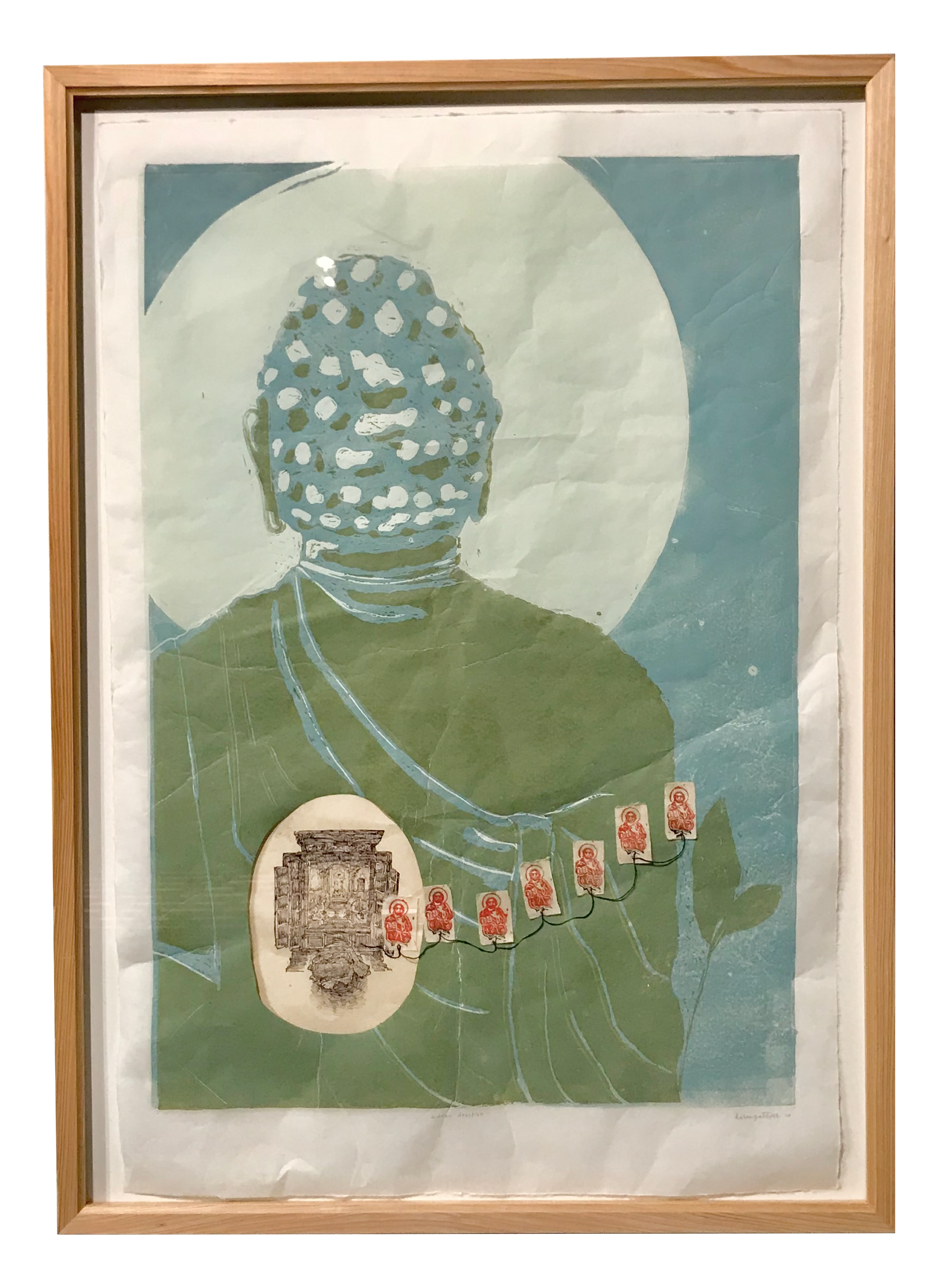Printmaking
satogaeri is a personal exploration of the dual-heritage experience. The three central prints focus on religion and its interaction with culture, referencing the history of Catholic missionary efforts and persecution during Japan's isolationist period, and the peculiar iconography that arose from the underground Japanese faithful. The subjects of the two other accompanying pieces are language fluency and self-image between two cultures. The title of the show, satogaeri, is a Japanese term meaning "a visit home to one's parents": a nostalgic and familiar term to me, yet not a term I feel entitled to, as it was not mine but my mother's satogaeri that I accompanied her on throughout my childhood. Where, then, does a child of two cultures belong? Where does one feel at home if one simultaneously finds familiarity and alienation in both cultures? satogaeri highlights the interactions between the alien and the vernacular, the outsider and the in-group — and finds grace in the peculiar in-betweens where they meet.

"hidden devotion" · linoleum reduction relief and ink pen on mulberry and kitakata, embroidery thread · 22" x 32"

"an image for stepping" · linoleum reduction relief and ink pen on mulberry · 22" x 32"

"our lady of the black ships" · linoleum reduction relief and ink pen on mulberry and kitakata, embroidery thread · 22" x 32"
artist statement, 2021
In my work, I explore childhood cultural experiences and fascination with the cute, the “komakai” or the detailed trivialities, and the oddly specific, through simple and familiar objects and aspects of everyday life in urban and suburban Japan. I bridge these childhood fascinations to deeper themes like understanding history, cultural identity, and faith, exploring the deeply rooted traditions of religious and cultural iconography; printmaking, in its nature, allows me to explore multiplicity and repetition, and its connections to consumerism, spiritual meditation, and personal reflection. It is all a part of a bigger narrative, a narrative in which everything is looked at with a childlike wonder; personally it is a way for me to work and rework my standing in my heritage and in the satogaeri, the “returning home,” and grasp at what it means to live and grow in the in-betweens.
In my work, I explore childhood cultural experiences and fascination with the cute, the “komakai” or the detailed trivialities, and the oddly specific, through simple and familiar objects and aspects of everyday life in urban and suburban Japan. I bridge these childhood fascinations to deeper themes like understanding history, cultural identity, and faith, exploring the deeply rooted traditions of religious and cultural iconography; printmaking, in its nature, allows me to explore multiplicity and repetition, and its connections to consumerism, spiritual meditation, and personal reflection. It is all a part of a bigger narrative, a narrative in which everything is looked at with a childlike wonder; personally it is a way for me to work and rework my standing in my heritage and in the satogaeri, the “returning home,” and grasp at what it means to live and grow in the in-betweens.

